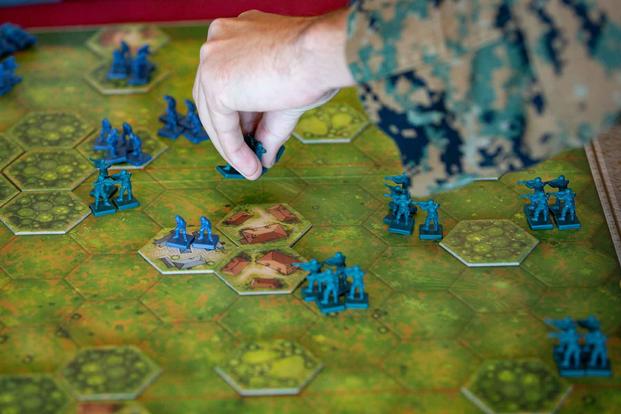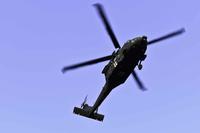The opinions expressed in this op-ed are those of the author and do not necessarily reflect the views of Military.com. If you would like to submit your own commentary, please send your article to opinions@military.com for consideration.
In the years between the two world wars, the Navy and Marine Corps conducted literally hundreds of Orange War Games playing out an expected war with Japan. Our modern concepts of naval carrier aviation, amphibious warfare and submarine warfare grew out of those games.
Even so, the naval services never claimed that those concepts were proven; they were works in progress when the Pacific War began. Fortunately, most of the concepts were sound. But many of the hard realities of actual war could not be anticipated. Americans found that their torpedoes did not work properly, Japanese pilots and planes were better than ours, and U.S. commanders had much to learn about real amphibious operations. The games were invaluable, but they were not crystal balls.
I teach a graduate class in red teaming and war-gaming at George Washington University's Elliott School of International Affairs. I stress several things to my students. First, war games do not validate anything. When done well, they can identify issues in a plan or concept that can help improve it. Sometimes, they kill a badly conceived concept in the cradle. Second, it is very rare for a war game or even a series of games to predict anything; they merely lessen the chance of total surprise.
Thus, I was surprised to learn that the Marine Corps claimed to have validated its Force Design (FD) 2030 concept based on a few war games and became alarmed about the fact that the current commandant of the Marine Corps has undertaken a radical restructuring of the service having used the games to justify his actions.
Essentially, the Corps had walked away from its traditional role as the nation's worldwide "911" force to concentrate on an anti-ship role in the South China Sea. In doing so, it got rid of all its tanks, its heavy engineering assets, much of its conventional artillery, and about one-third of its aviation capabilities. All this was done to buy anti-ship missiles designed to deny the Chinese naval dominance of the South China Sea by occupying small islets in the area with small units firing those missiles at Chinese ships.
I began to study FD 2030 very carefully and tried to learn what I could about the concept and the games that supposedly validated it. Being an old red teamer, where an analyst takes on the role of an adversary in a simulation to help identify weaknesses in one's own plans, I tried to look at this from a Chinese perspective.
The first problem that I ran into was that the games and their subsequent analyses were classified. There are only three reasons to classify a war game: (1) the scenario is so sensitive that it cannot be divulged, (2) you are using weapons systems of a classified nature, or (3) you do not want prying eyes on your work that might question its rigor or validity.
Cases one and two were eliminated in my mind immediately. The Marine Corps makes no secret of the fact that FD 2030 is aimed specifically at China, and the weapons systems used are the ones that the commandant wants to buy. What remains is the third option, which is troubling. The leadership of the Marine Corps was essentially saying, "Trust us; we know what we are doing." That trust was hard-earned over two and a half centuries. The possibility that it had been betrayed is deeply disturbing. Of course, it is possible that secret systems were tested in the games, justifying the classification, but we will never know.
Frustrated by that approach, I put on my Chinese hat. Having played them in many war games, I tried to look at the problem from the strategic, operational and tactical levels. Strategically, I would tend to ignore FD 2030, because the most likely potential of a conflict would be an invasion of Taiwan from the mainland. Since the Marines would be hundreds of miles away and irrelevant, they could be safely ignored. Any Chinese attempt to gain sea control in the battle area would be conducted with a combination of overhead targeting, missiles, aircraft, mines and submarines in an anti-access/access denial approach rather than by surface ships.
At the operational level, the Americans might try to impose a maritime blockade on my ocean-going commerce to punish me for the Taiwan invasion. In that case, I would be more worried about their attack submarines than small units of light infantry armed with missiles flitting from islet to islet. Even if one group got lucky and hit a ship, they would then become a target easily detected by my overhead assets.
At the tactical level, if the Marines became a real nuisance and I could not destroy them with my own missiles, I could always use swarms of my own light infantry landing from small, fast vessels to overwhelm and neutralize them. There would also be the possibility of using tactical nuclear weapons to eliminate the threat, but that possibility is so small as to be infinitesimal.
If FD 2030 could beat the red team in those games that justified it, one of two things happened. First, the Corps hired the most incompetent red team in the history of war-gaming, or their analysts cooked the books. I have talked to several involved in the games who wouldn't comment on the record, and I'm worried that the second is the case.
There are no real secrets in Washington, and when this one comes out, if indeed the war games weren't a realistic match, the integrity of the Corps for "keeping its honor clean" will be lost.
The Marine Corps will get a new commandant this summer. If I were in his shoes, I would commission a new set of open-source games using several competent red teams and independent analysts. To the extent possible, those games would examine not only the threat of the Chinese surface navy, which is the least likely scenario, but also explore the usefulness of FD 2030 in a Taiwan invasion since that is the most likely case.
If those games show FD 2030 to be the badly flawed concept that I and scores of retired and active-duty Marines think it is, the new commandant can take steps to begin to repair the damage that has been done to the capabilities and, worse, the integrity of the Corps.
-- Gary Anderson was the director of Marine Corps Wargaming and the chief of staff of the Marine Corps Warfighting Lab. He was a senior executive of the Defense Adaptive Red Team.













